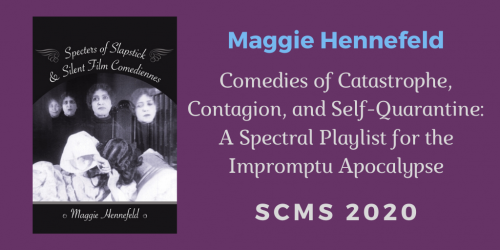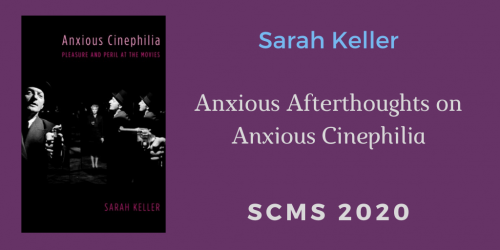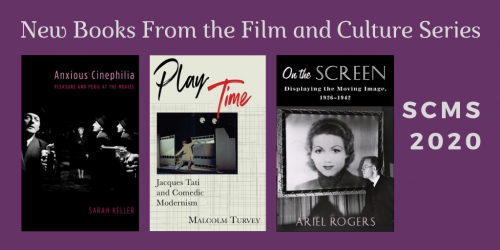Q&A: Claudia Breger on Making Worlds, and What Films to Watch While Social Distancing

“Claudia Breger’s Making Worlds is a vital contribution to the political dimensions of contemporary film and media theory. Breger’s meticulous readings of contemporary cinema create generative openings in impasses that have petrified debate over the past three decades, developing models of cinematic worldmaking for critically feeling out the possibilities of creative assemblage and collective assembly in the face of authoritarian enclosure and humanitarian crisis.”
~James Leo Cahill, University of Toronto
A big thanks to Claudia Breger for taking the time to answer some questions about her new book, Making Worlds: Affect and Collectivity in Contemporary European Cinema. She also suggests some contemporary European films to watch while we are at home social distancing.
• • • • • •
Question: How has contemporary European cinema provided new, alternative ways to imagine connectivity and collectivity among individuals and/or groups, and to challenge such resurgent political trends as economic disparity, racial exclusion, and hatred of refugees/immigrants?
Claudia Breger: I argue that contemporary European cinema offers artistic engagements that (directly or indirectly) tackle hate, fear, and aggression in the contemporary public sphere by unfolding intricate configurations of layered, often diverging affects in equally intricate scenarios. In other words, it’s not only about positive, empathy-inducing images, although empathy does play a role in many of the works I discuss, and I am not out to dismiss its political significance. But my wager is that cinema―and by extension, the contemporary arts and humanities―can do more by engaging us in worlds that are complicated, unsettling, and sometimes irritating or haunting. The films I highlight (and these are mostly artsy films, although more narrative than radically experimental) variously assemble feelings of hatred and violence with generosity and conviviality. For example, they aim to make sense of people’s attachments to violent collectives, they unfold ethical conflicts, or imagine transcultural connection, resistance, and solidarity explicitly in the face of persisting legacies of hate and inequality. I use Jacques Rancière’s words in saying these films shuffle and reconfigure “the sensible”: they encourage us to see, hear, feel, and think again about present, past, and future forms of affective belonging.
Q: Can you offer some examples of recent European films that promote openness and acceptance of the other?
CB: In the book, I discuss, for example, Gianfranco Rosi’s poetic documentary Fire at Sea (2016), on the Mediterranean island Lampedusa in the so-called refugee crisis. My argument is that the film does not only call for compassion across national borders and continents (although it does—and forcefully so). But more intricately, the film pursues both the stark divisions between different worlds (of Europeans residents vs. immigrants) created by political realities and the subterranean connections that bind these worlds together after all: the shared exposure to economic precarity, war (on a historical axis), and the forces of nature.
A very different example is Aki Kaurismäki’s The Other Side of Hope (2016), the second film in the Finnish auteur’s unfinished “refugee trilogy,” which, I argue, creatively remixes the forces of genre (fairy tale, comedy, musical) to envision solidarity against all odds. The film imaginatively defies the harsh realities of hate and exclusion that both the production team and the film’s audiences are very much aware of (and which are present in the film in documentary glimpses), asking us to entertain the possibility that regular (in Kaurismäki’s filmic worlds characteristically quirky, grumpy, drunk, and poor) people might come together to change the world.
Finally, a yet very different film that I don’t discuss in the book is Valeska Grisebach’s Western (2017), which reverses the genre template of the Western to look at quasi-colonial relations in contemporary Eastern Europe, where German construction workers set out to “develop” the Bulgarian countryside with heavy machinery, EU financing, and racist attitudes. The interesting feature here is that Western—which is fictional but was filmed with lay actors, including actual construction workers—does this without pronouncing quick judgment. So the film really unsettles any notion we might have of who “the other” even is, without condoning the workers’ racism.
Q: In this time of quarantine, tension, and fear, can you suggest some European films that would be good to watch?
CB: All of the above. Any other film by Kaurismäki as well, for his extraordinary ability to preserve a sense of humor in a really desolate situation. If you are up for facing the effects of the moment in a more serious fashion, maybe something by the Dardenne brothers, who specialize in dramatizing ethical concerns around questions of solidarity. Their Two Days, One Night (2014) follows a woman who has two days to convince her fellow employees to vote against her getting laid off, sacrificing the bonuses that the management offers for their complicity.
Benjamin Heisenberg’s Sleeper (2005) is a slightly older film that hauntingly dramatizes fear, envy, and racialized suspicion in the “war on terror” context.
Alejandro G. Iñárritu’s Biutiful (2010), which is set in Barcelona and co-produced by Spain, might just be too sad right now, but—as I argue in the book—it also makes very powerful connections between “our” lives and those of the “others” around us against the backdrop of illness and precarity.








